Baby hippos are some of the cutest creatures on the planet. With their big eyes and tiny ears, they’re hard to resist.
But there’s more to these little animals than just their adorable appearance.
Here are ten interesting facts about baby hippos that you may not know.
- 1. Baby hippos spend eight months in their mother’s wombs
- 2. Baby hippos suckle underwater
- 3. Twin baby hippos are a rarity
- 4. Baby hippos can’t swim or breathe underwater
- 5. A baby hippo can weigh up to 100 pounds
- 6. Male adults can sometimes attack baby hippos
- 7. Female baby hippos mature faster than males
- 8. Baby hippos need special time with mommy
- 9. A baby hippo is called a calf
- 10. The first hippo ultrasound was recorded in 2017
- Final thoughts on baby hippos
1. Baby hippos spend eight months in their mother’s wombs
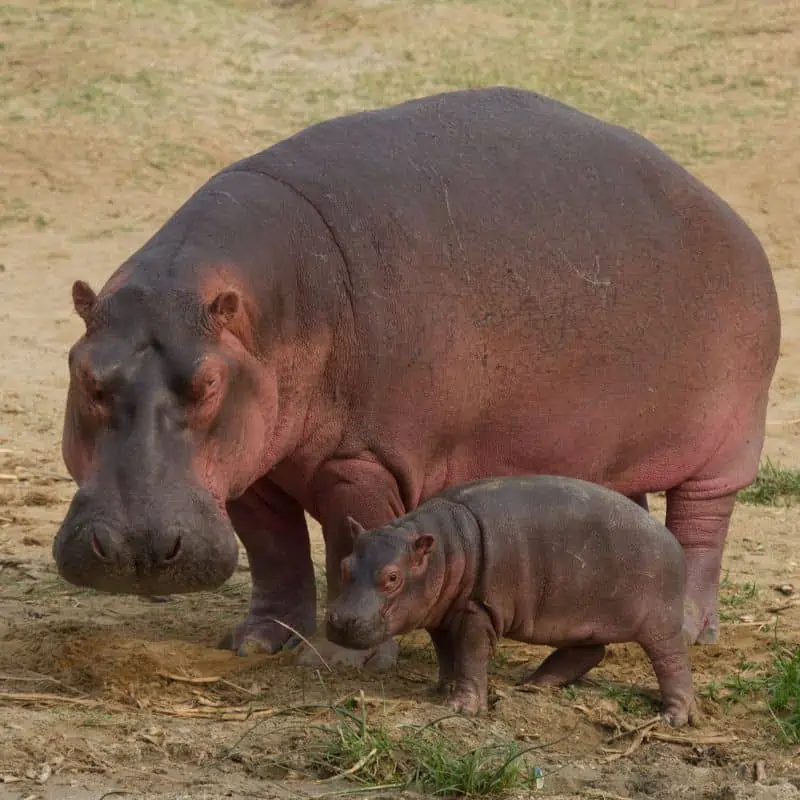
One fascinating thing about female hippos is that the hippo gestation period lasts eight months.
While that may seem normal compared to a human’s pregnancy duration, it’s downright strange when judging by animal rules.
To put things into perspective, animals have longer or shorter pregnancies based on size. The larger a mammal is, the longer its pregnancy tends to last.
This is noticeable in elephants, the pregnancy of which can extend for an unbelievable 22 months. Or giraffes, who have a gestation period of around 15 months.
Since hippos are the second largest mammals on earth, it makes sense for their pregnancies to last for a duration that’s just a little shorter than that of elephants.
Yet, that’s not the case with their eight months of pregnancy.
When a baby hippo is finally born, it spends an extra eight months suckling its mother’s milk. Afterward, it’s introduced to solid foods like grass.
2. Baby hippos suckle underwater
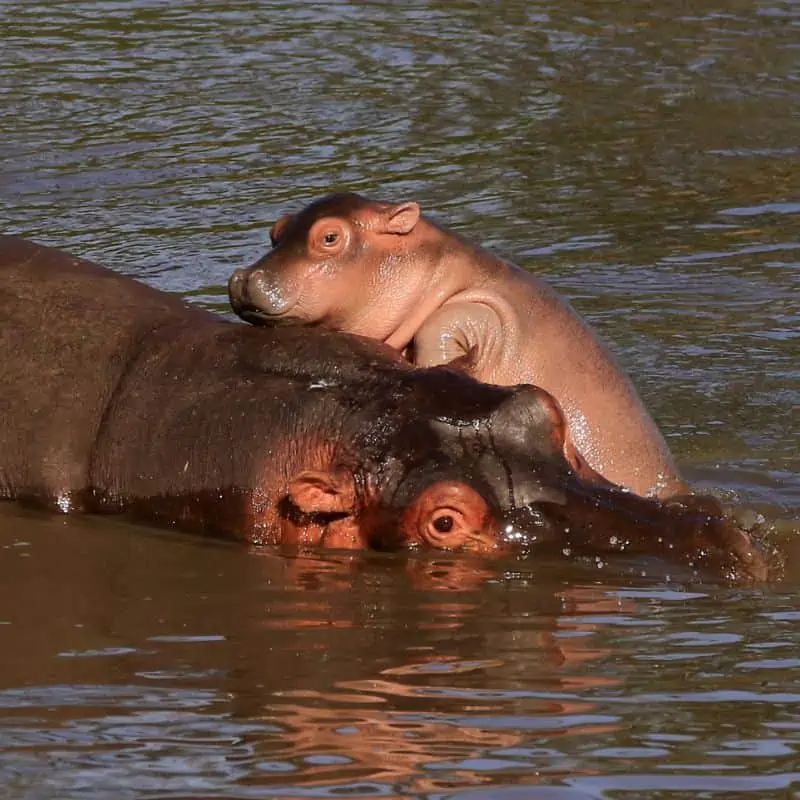
Baby hippos join their mothers in the water to suckle on their breasts’ milk under the surface.
This is because adult hippos, both males and females, spend most of their day submerged in water to keep their bodies cool in the harsh African sun.
So, baby hippos take it upon themselves to go underwater to get their food.
They’ll close their ears and noses to prevent the water from getting inside, focusing solely on getting as much milk as possible.
3. Twin baby hippos are a rarity
Many mammals give birth to more than one youngling in one go, as is the case with horses, dogs, pigs, deer, and more.
However, this event rarely happens in hippopotamuses; they usually have single births.
Still, this can occur. In one of Zambia’s famous lodges, back in 2018, a female hippo gave birth to two babies. Experts claim that twin hippos can happen at a rate of 15 occurrences per 100 years.
4. Baby hippos can’t swim or breathe underwater
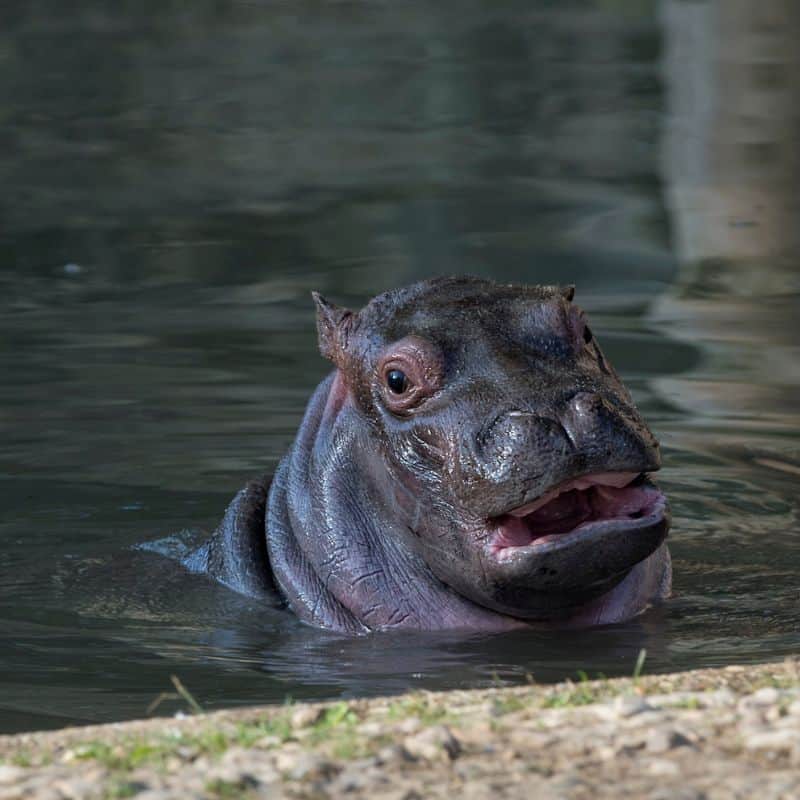
Just like adults, baby hippos cannot swim or even breathe underwater, despite spending most of their lives in bodies of water.
Still, they can hold their breath for five minutes before coming up for air.
As for the swimming part, baby hippos depend on simply pushing themselves off the bottom of rivers or lakes with their legs to exit the water.
Or, if they’re in a shallow water source, they just walk with their tiny legs.
5. A baby hippo can weigh up to 100 pounds
While that’s not as incredible as an adult hippo’s 3,500 to 9,920 pounds, 100 pounds (45 kg) is a lot to describe a baby’s weight.
More interestingly, a pygmy hippo’s birth weight is much less than that. It’s much closer to a human newborn weighing around 13 or 14 pounds (5.9 to 6.3 kg).
6. Male adults can sometimes attack baby hippos
It’s not uncommon for male adults in the animal kingdom to commit infanticide. This happens with hippos, too, which is why mothers try their best to protect their babies.
Male hippopotamuses may try to kill offspring from other male hippos so that only their calves survive.
If the males attack, it’s usually underwater and never on land.
7. Female baby hippos mature faster than males
Females reach mating maturity when they are three or four years of age, but they’ll more commonly do it from the age of five.
Males take a lot longer and are only ready to mate when they’re as old as 7.5 years.
8. Baby hippos need special time with mommy
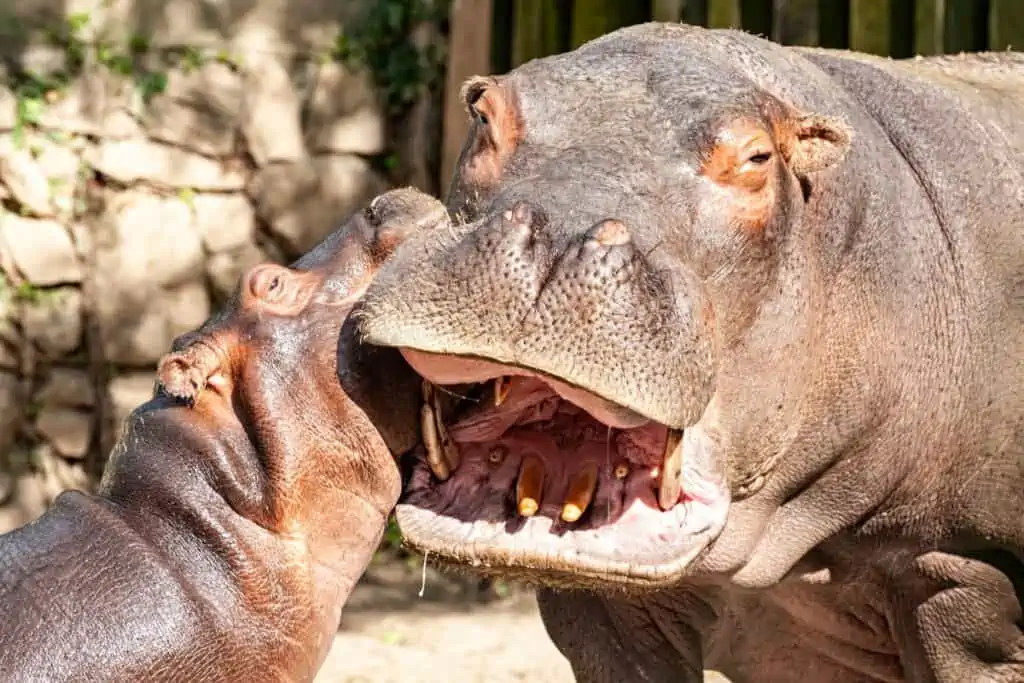
Right after birth, hippo mothers take their babies to spend the first few weeks of their lives away from the herd.
During this time, mother and baby bond and establish a strong relationship, usually in the water.
Then, after a few weeks, the mother and her baby emerge to rejoin the herd of hippos again.
9. A baby hippo is called a calf
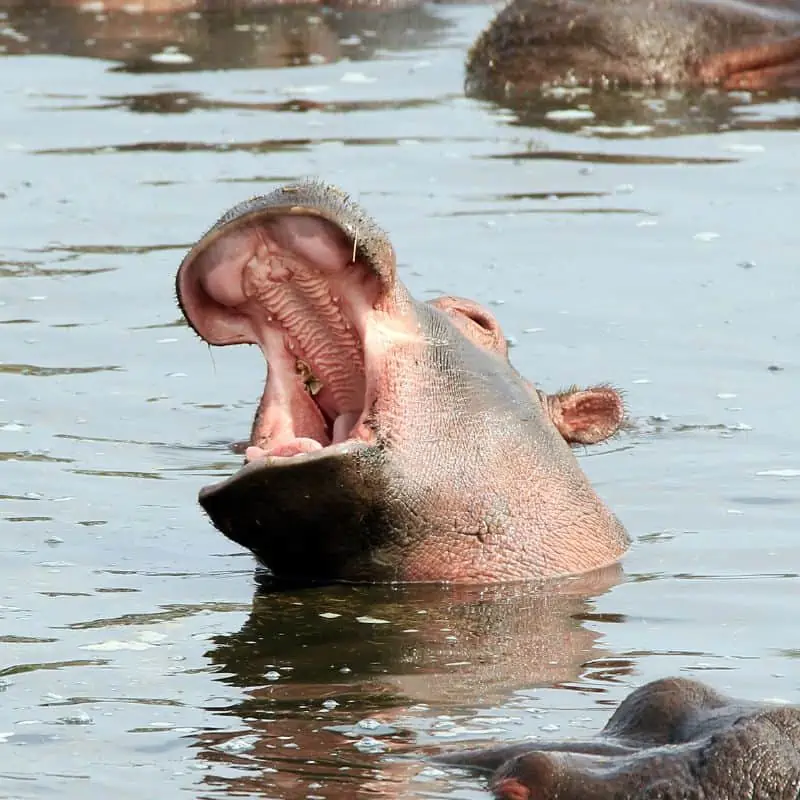
Like other animals, including cows, camels, buffalos, and elephants, the babies of hippos are called calves.
This makes a lot of sense, considering female hippos are called cows, and males go by bulls.
10. The first hippo ultrasound was recorded in 2017
One thing you should know about hippos is that they tend to be aggressive around humans.
They’re a danger to be around, especially since the force of their bite is around 1,800 pounds of force, and their ivory teeth are sharp.
So, trying to perform an ultrasound on a female hippo sounds impossible. Yet, quite surprisingly, a hippo at Cincinnati Zoo allowed people to get an ultrasound of her baby hippo, the first in history.
A lot of factors made this ordeal possible. The hippo was naturally docile and well-trained, and she didn’t mind the procedure.
Also, the zookeepers did a great job coaxing her to do what they wanted by offering her some of her favorite food.
Final thoughts on baby hippos
The hippopotamus is a fascinating creature with many unique and interesting features.
We hope you enjoyed reading these ten fun facts about baby hippos.
If you’re lucky enough to see one in person, take a moment to appreciate the wonder of nature.
